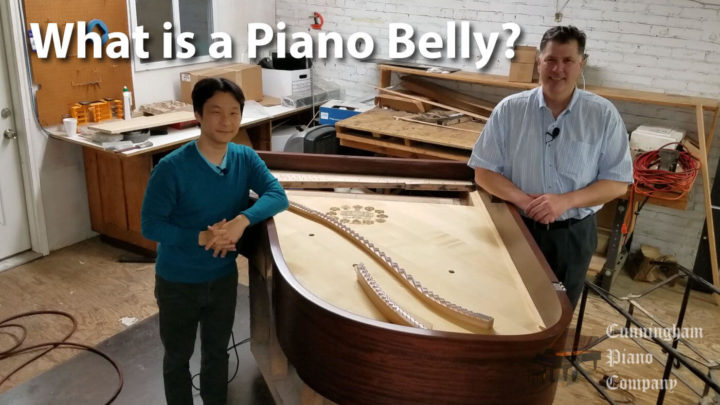- A Soundboard
- Bridges
- The outer rims of the piano
- The Pinblock.
What is a Piano Belly?

The Piano Belly consists of:
